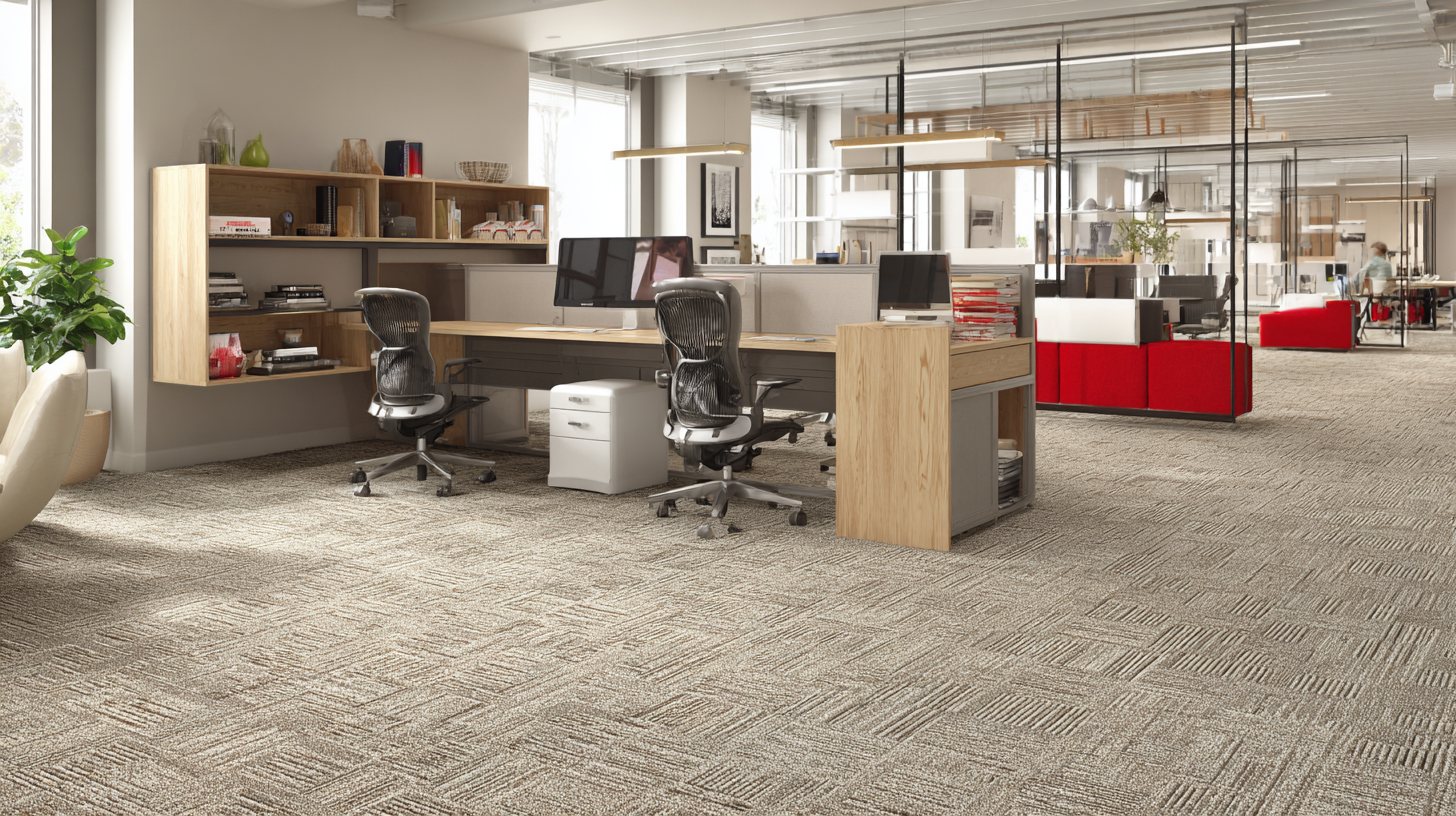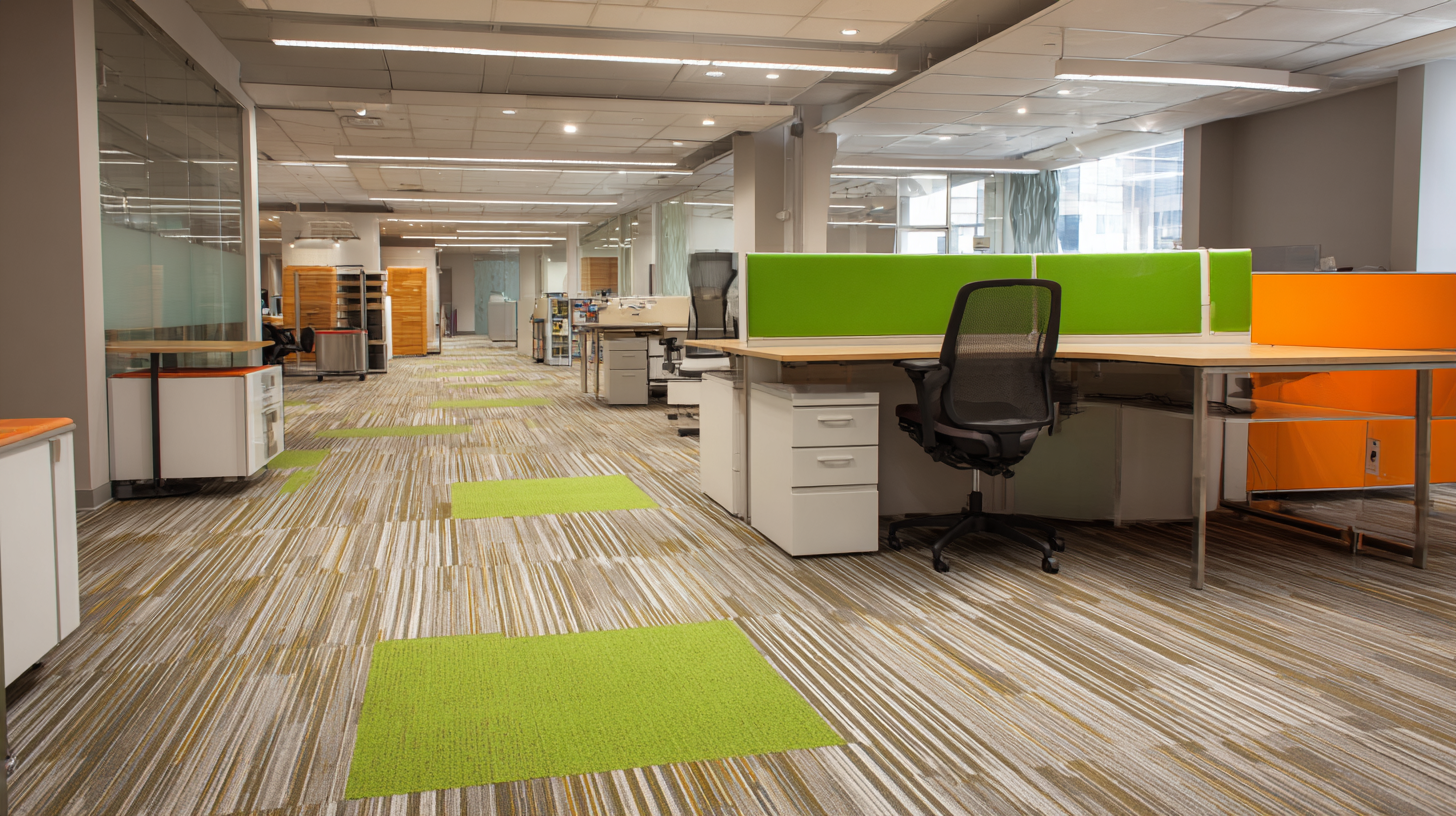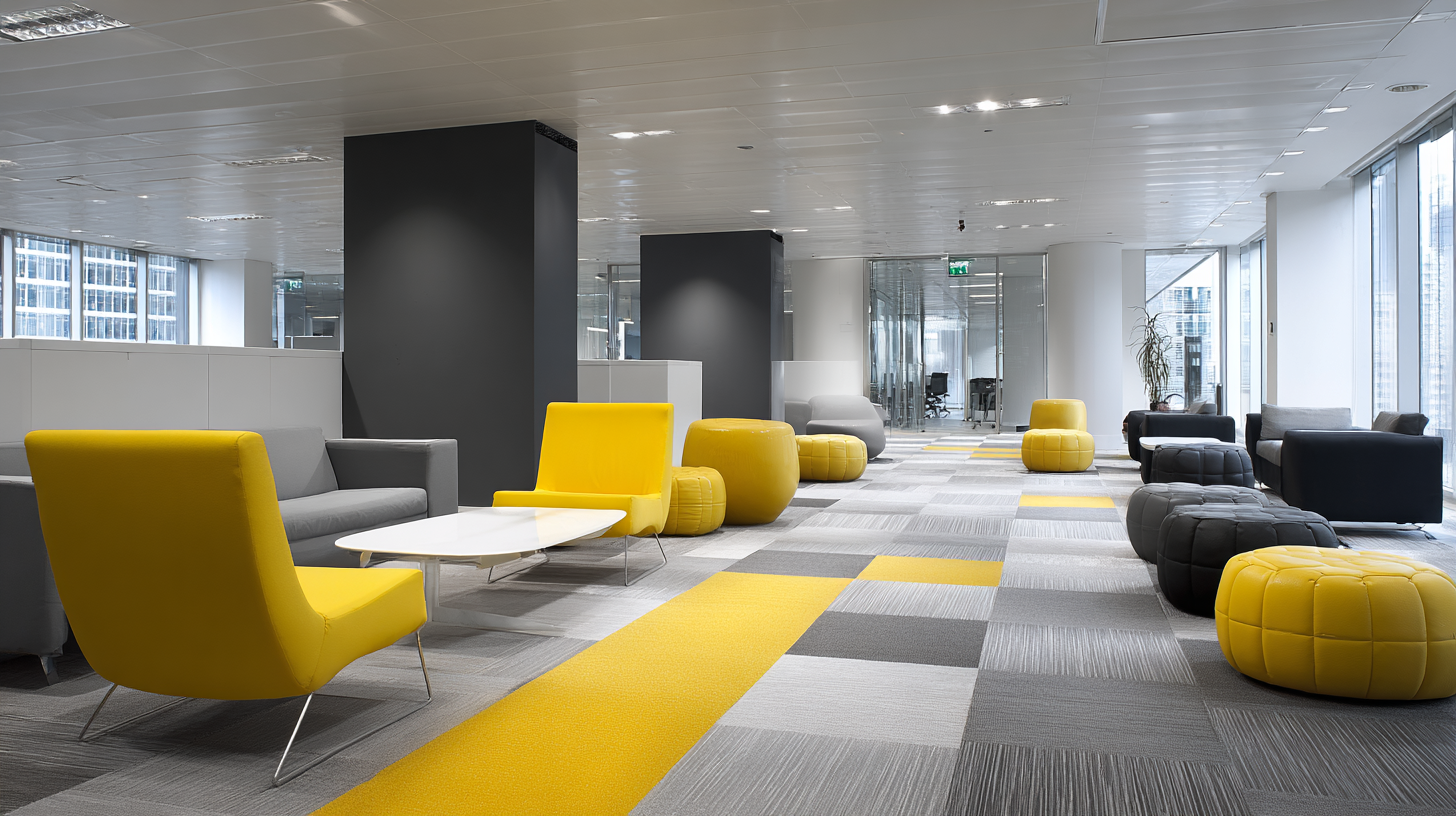
-
Home
-
About Us
-
Products
-
News
-
Blog
-
Contact Us
Leave Your Message

In the evolving landscape of modern workplaces, selecting the right "Carpet Office" solutions is crucial for enhancing both aesthetics and functionality. According to a report by the International Carpet Association, the commercial carpet market is projected to reach $8.65 billion by 2025, reflecting the increasing demand for durable and stylish flooring options in office environments. The right carpet not only contributes to the overall ambiance of the workspace but also plays a vital role in employee productivity and well-being. Studies indicate that well-chosen flooring can reduce noise levels by up to 30%, creating a more conducive environment for collaboration and focus. As companies prioritize employee experience and brand image, understanding how to choose the best carpet solutions tailored to specific business needs becomes essential for fostering a thriving workplace.

When selecting carpet office solutions for your business, it is crucial to understand the various types available, each with its own set of pros and cons. Broadloom carpet, for example, offers a seamless look and enhances acoustics, making it ideal for open-office environments. However, it can be challenging to install and may require more maintenance than other options.
On the other hand, carpet tiles are increasingly popular due to their versatility and ease of replacement. If a section gets stained or damaged, simply swapping out a tile is far easier than replacing an entire roll of carpet. They also come in a variety of designs and colors, allowing for creative customization. However, one downside is that seams may become visible over time, potentially detracting from the overall aesthetic.
**Tips:** When choosing carpet solutions, consider the foot traffic in your office areas. High-traffic zones may benefit from more durable materials that can withstand wear and tear. Additionally, think about the maintenance aspect—lighter colors might look appealing but can show dirt quickly; selecting darker or textured carpets can help hide stains and reduce cleaning frequency.
| Type of Carpet | Pros | Cons | Best Usage |
|---|---|---|---|
| Loop Pile | Durable, easy to clean | Limited cushioning | High-traffic areas |
| Cut Pile | Soft, luxurious feel | Might wear down faster | Executive offices, reception areas |
| Berber | Highly durable, stain-resistant | Can be rough underfoot | Informal office settings, break rooms |
| Frieze | Soft, curly texture | Difficult to vacuum | Lounge areas, quiet spaces |
| Tile Carpet | Easy to install, replaceable | Seams can be visible | Modular offices, flexible spaces |
When selecting carpet solutions for an office, evaluating durability should be a top priority. Durable carpets not only withstand the rigors of daily foot traffic but also contribute significantly to long-term cost savings. High-quality materials are more resilient to wear and tear, which means they maintain their appearance and functionality over time. Choosing carpets that can endure heavy use reduces the frequency of replacements, minimizing disruptions to your business operations and saving on future expenditures.
In addition to regular maintenance costs, durable carpets can also impact other aspects of your business's financial health. For example, carpets with stain-resistant and easy-clean properties can lead to reduced cleaning costs and extended lifespans, further enhancing your investment. A wise choice in carpet materials can yield a lower total cost of ownership over several years, ultimately allowing businesses to allocate their resources more effectively. Prioritizing durability in your carpet selection provides not only immediate benefits but also significant long-term advantages for your business.
When it comes to selecting the right carpet styles for your office, aesthetic considerations play a crucial role in enhancing the overall ambiance of your workspace. According to a 2021 report by the International Interior Design Association, 73% of office workers believe that their work environment significantly impacts their performance and creativity. Therefore, choosing the right carpet can contribute positively to employee satisfaction and productivity.
Tip 1: Consider the overall color scheme of your office. Opting for carpets that complement your brand's colors can create a cohesive look that reflects its identity. For example, neutral shades can provide a calming backdrop that allows vibrant furniture and decor to stand out, while bold patterns can add energy to collaborative spaces.
Tip 2: Take into account the foot traffic in different areas of your office. High-traffic zones, like reception areas or hallways, benefit from durable, stain-resistant materials that can withstand wear and tear. According to the Carpet and Rug Institute, carpets with a tighter pile and density often offer better durability for busy environments, ensuring your investment lasts longer while maintaining an inviting look.
By paying attention to these aesthetic considerations and incorporating suitable carpet styles, businesses can create not only functional but also visually appealing office environments that foster productivity and comfort.

When evaluating carpet office solutions for your business needs, conducting a cost-effectiveness analysis is crucial. This assessment not only compares the expenses associated with different carpet options but also considers alternatives, such as vinyl flooring or laminate. By analyzing factors like installation costs, maintenance expenses, and lifespan, businesses can determine which flooring solution provides the best return on investment.

For instance, a recent cost-effectiveness study in a different context illustrated how various health insurance solutions impact long-term financial outcomes. Similarly, in the realm of office flooring, the initial expenditure on high-quality carpets may be offset by their durability and reduced maintenance requirements over time. By carefully analyzing these factors, businesses can ensure they are making informed decisions that align both with their budget and operational needs. In the end, a well-researched choice in carpet office solutions can contribute significantly to a company's overall efficiency and employee satisfaction.
Sustainability in office carpeting has become a pressing concern for modern businesses aiming to minimize their environmental impact. According to a 2022 report from the International Institute of Carpet and Flooring, approximately 45% of commercial carpeting ends up in landfills each year, contributing significantly to waste and landfill overflow. As more organizations strive for eco-friendly practices, the demand for sustainable carpet options has surged. Companies are now considering carpets made from recycled materials or those that are easily recyclable, reducing their carbon footprint.
In addition to waste reduction, sustainable carpeting can also improve indoor air quality—a vital element for employee health and productivity. A study conducted by the Carpet and Rug Institute revealed that low-VOC (volatile organic compound) carpets can vastly improve air quality, with reductions in airborne pollutants by up to 80%. By choosing eco-friendly carpets that comply with industry standards like Cradle to Cradle or the Environmental Product Declaration (EPD), businesses can not only contribute to a healthier work environment but also enhance their sustainability credentials. This shift toward sustainable office carpeting is not merely an ethical decision; it is becoming a strategic advantage in attracting environmentally-conscious consumers and retaining top talent.